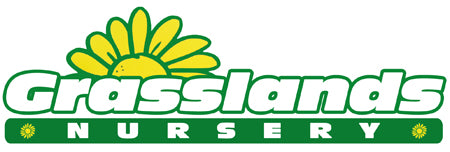Box Hedging (Buxus sempervirens) – 60/80cm Root Ball
Timeless Evergreen Structure for Low, Formal Borders
Box hedging (Buxus sempervirens) is a classic, slow-growing evergreen ideal for formal gardens, parterres, and defined borders. Supplied here as a root ball plant at 60/80cm in height, it’s perfect for establishing a dense, compact hedge with year-round structure and a polished, traditional look.
Seasonal Beauty & Growth
Spring:
New, bright green growth emerges on existing dark green foliage, giving the hedge a fresh, vibrant appearance. Light trimming can begin to shape the plant.
Summer:
Box hedging holds its neat form well during summer. Foliage deepens in colour and maintains a dense, bushy texture. Regular trimming encourages thicker growth.
Autumn:
Foliage remains rich and green. Cooler weather may slow growth, but the structure stays strong and appealing. Minimal maintenance is required in this season.
Winter:
Being fully evergreen, Box continues to provide structure and interest through the colder months. It holds up well in low temperatures and continues to protect garden outlines.
Structure & Form
-
Height Supplied: 60–80cm
-
Growth Habit: Dense, upright, and compact
-
Foliage: Small, glossy, dark green leaves that stay year-round
-
Growth Rate: Slow (10–15cm per year)
-
Mature Height: Easily maintained at 60–100cm, but can grow taller if left unclipped
Ideal For
-
Formal Garden Borders: Creates a smart, timeless edge for beds and pathways.
-
Low Hedges & Knot Gardens: Perfect for maintaining shape and sharp definition.
-
Evergreen Structure: Adds green bones to the garden during winter.
-
Topiary Training: Excellent for shaping into balls, cones, or low ornamental forms.
Growing Conditions & Care
-
Position: Prefers partial shade but also thrives in sun if soil remains moist.
-
Soil: Well-drained, moisture-retentive soil. Avoid heavy clay or waterlogging.
-
Feeding: Apply a balanced slow-release fertiliser in spring to encourage growth.
-
Watering: Keep well-watered during dry spells, especially in the first year.
-
Pruning: Light trims two or three times a year keep it tidy and thick.
Why Choose 60/80cm Root Ball Box Hedging?
-
Instant impact with ready-formed, taller plants
-
Evergreen foliage for year-round structure
-
Ideal for low formal hedging and definition
-
Low-maintenance and long-lasting
-
A traditional favourite in British gardens
Guide to Planting Field-Grown Root Balled Plants
Pros:
- Established Roots: Typically stronger, established roots ensure better initial growth.
- Immediate Impact: Larger plants provide instant structure and aesthetics.
Cons:
- Heavy and Bulky: Can be difficult to transport and plant due to size and weight.
- Seasonal Availability: Generally available only in the dormant season (autumn to early spring).
Preparation for Planting:
- Unwrap Carefully: Remove any packaging material, but leave the burlap or wire basket on.
- Keep plants moist: Plants should be kept moist until the time of planting.
Planting Process:
- Dig a Hole: Make a hole twice the width of the root ball and the same depth.
- Position Plant: Place the root ball in the hole, ensuring the top is level with the ground surface.
- Do Not Remove Root Sack: Leave the burlap or wire basket around the root ball. It is bio degradable and will rot away naturally.
- Backfill: Fill the hole with soil, firming gently around the roots to eliminate air pockets.
- Water: Water deeply after planting to settle the soil and avoid wilting.
Possibility of Losses:
- Initial Shock: Some plants may suffer transplant shock, leading to potential losses.
- Mitigation: Proper care and consistent watering during the establishment phase can minimise this risk.
Main Causes of Failure:
- Improper Planting Depth: Planting too deep or too shallow can stress the roots.
- Poor Soil Conditions: Compacted or poorly drained soil can hinder root growth.
- Insufficient Watering: Both under-watering and over-watering can lead to plant stress and failure. Strong wind can dry leafy pants.
- Pest and Disease: Lack of protection and monitoring can result in damage from pests and diseases.
Tips for Success:
- Stake Larger Plants: Support with stakes to prevent wind damage.
- Mulch: Apply a layer of mulch around the base to retain moisture and regulate temperature.
- Regular Monitoring: Check for signs of stress, pests, and disease, and address them promptly.
By following these guidelines and providing consistent aftercare, you can successfully plant and establish field-grown root balled plants in your garden.
Does the height include the pot?
No, we measure from the top of the pot to the tip of the plant except for some of the instant planted screens, in this case it will be stated in the description
How long does delivery take?
Most orders are delivered in just a few days, Smaller items are often sent with Parcelforce on a next day service, Larger items should allow up to 10 days due to the size of the items they often have to be sent on our own transport.
Where will you leave my plants?
We will leave your order at the front of your property, Parcelforce may
leave your items in a safe place if you let us know, Pallet couriers
will require a flat hard surface to deliver to, no gravel or soil, a
driveway or parking spot would be best. Most importantly Deliveries by
pallet courier will require access for a large truck (bin lorry sized)
to get near the delivery point. Deliveries sent on our own transport may come in a small van or larger truck.



